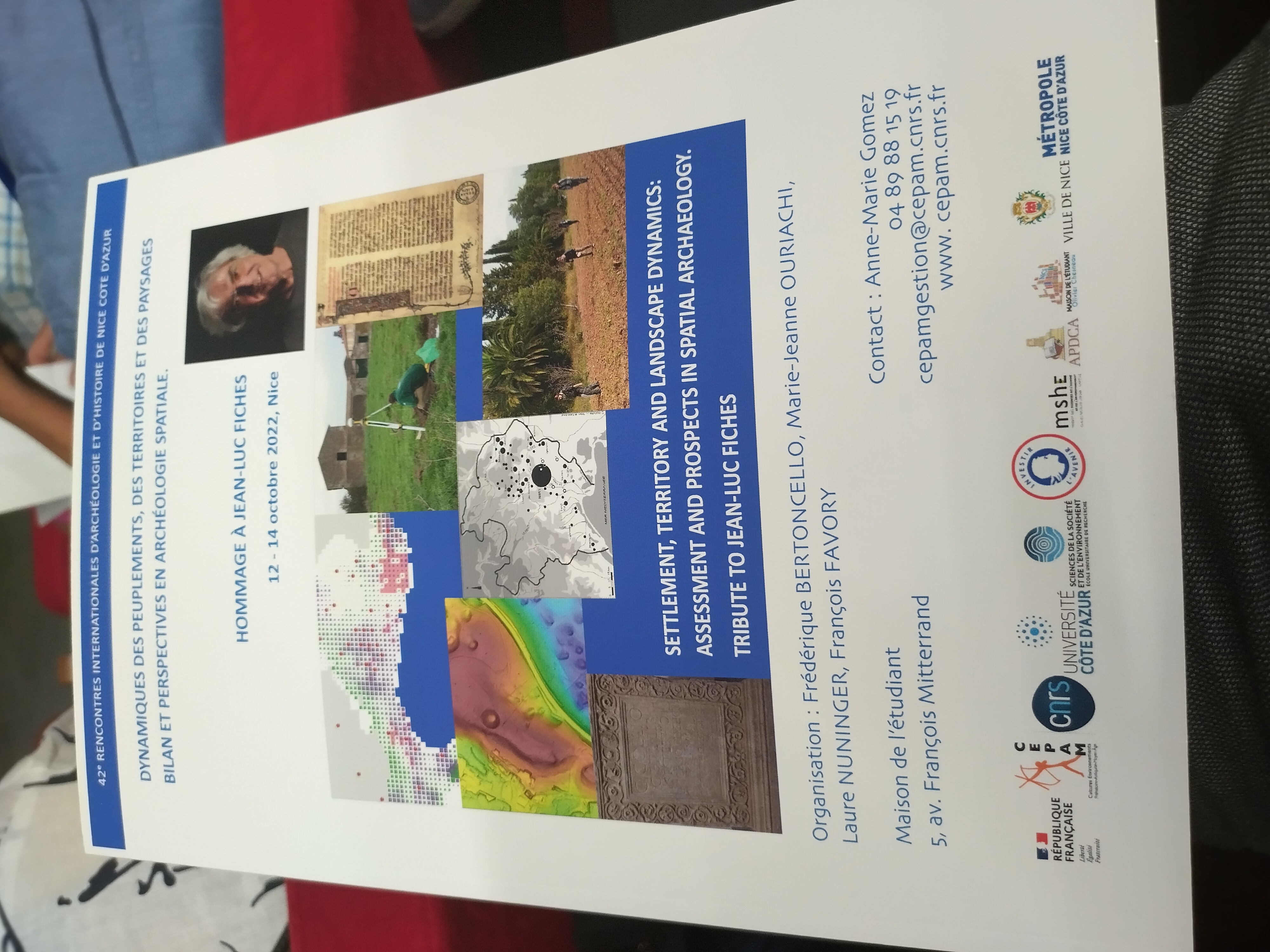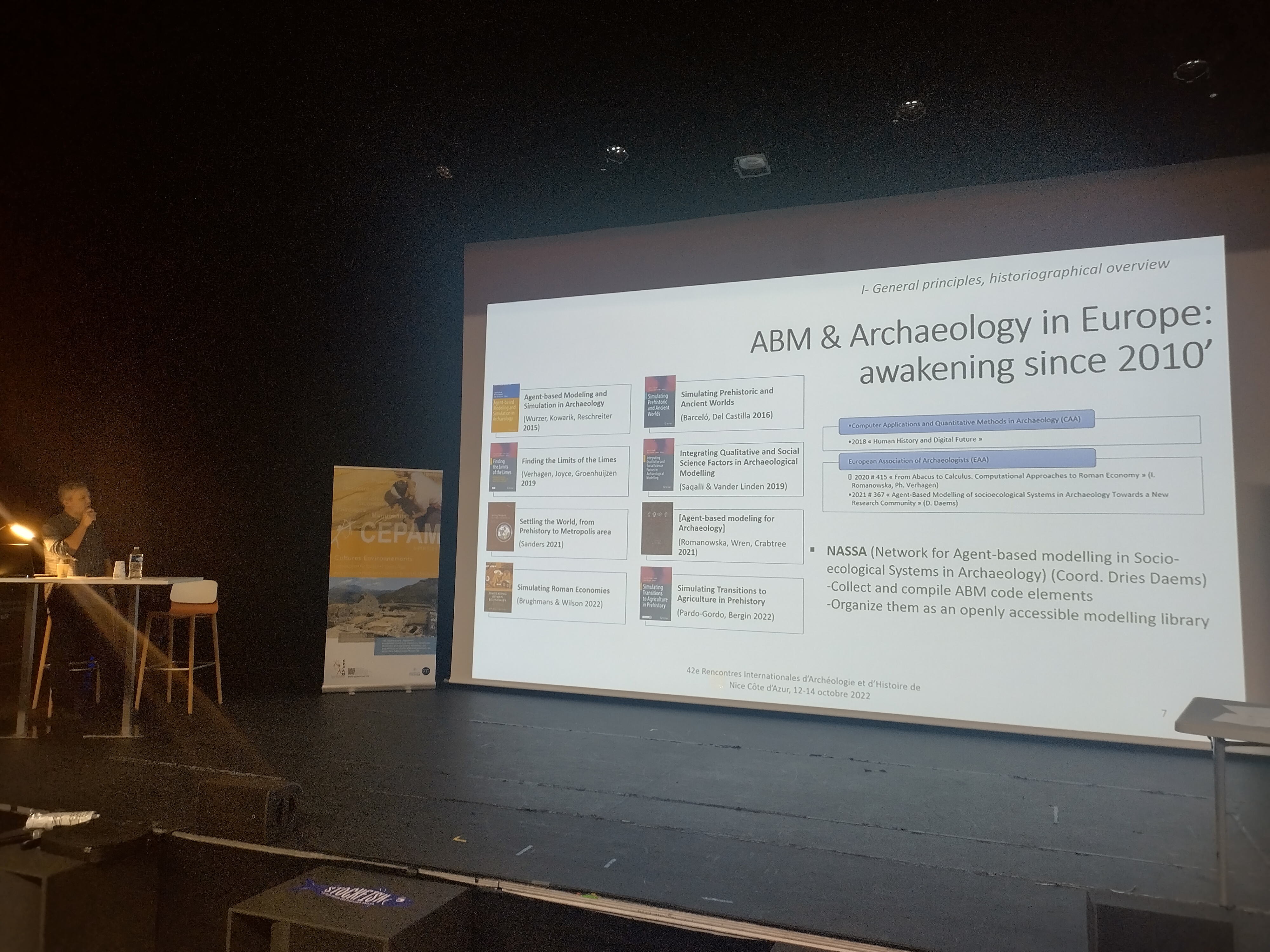NASSA in Nice
Various NASSA members participated in the 42nd Rencontres Internationales d’Archéologie et Histoire in Nice from 12-14 October 2022. This conference focused on the theme of settlement, territory and landscape dynamics and aimed to honour the work of Jean-Luc Fiches (1946-2012) and colleagues, who started working on the spatial and statistical analysis of Gallo-Roman settlement patterns in the late 1980s in the Languedoc-Roussillon region. In particular, the Archaeomedes Project (1992-1996) contributed enormously to the development of geospatial analysis methods for studying the long-term development of settlement patterns over a wide range of regions in France and beyond.

The conference aimed to look back on what has been achieved over the past 40 years, and what are the current topics of interest. These ranged from microregional inventories to innovative use of GIS, statistics and remote sensing in landscape archaeology, and the development of simulation models to study past landscapes. It is of course on this last subject that NASSA members contributed to the conference. Nicolas Bernigaud provided a state of the art of simulation modelling in archaeology, Dries Daems and Stef Boogers presented a simulation of community formation during the Iron Age and Hellenistic times in SW Anatolia, and Kaarel Sikk showed an agent-based model that can be used to explore the effects of environmental determinism on spatial choice. Marek Vlach focused in his presentation on (spatial) data analysis as part of an ambitious simulation model of Germanic chiefdoms societies of the Middle Danube in the Roman period.

In his closing address, Sander van der Leeuw, one of the founders of both spatial landscape archaeology and simulation modelling, emphasized the importance of computational models in archaeology to make better sense of the past, and to answer challenges in present-day societies.

